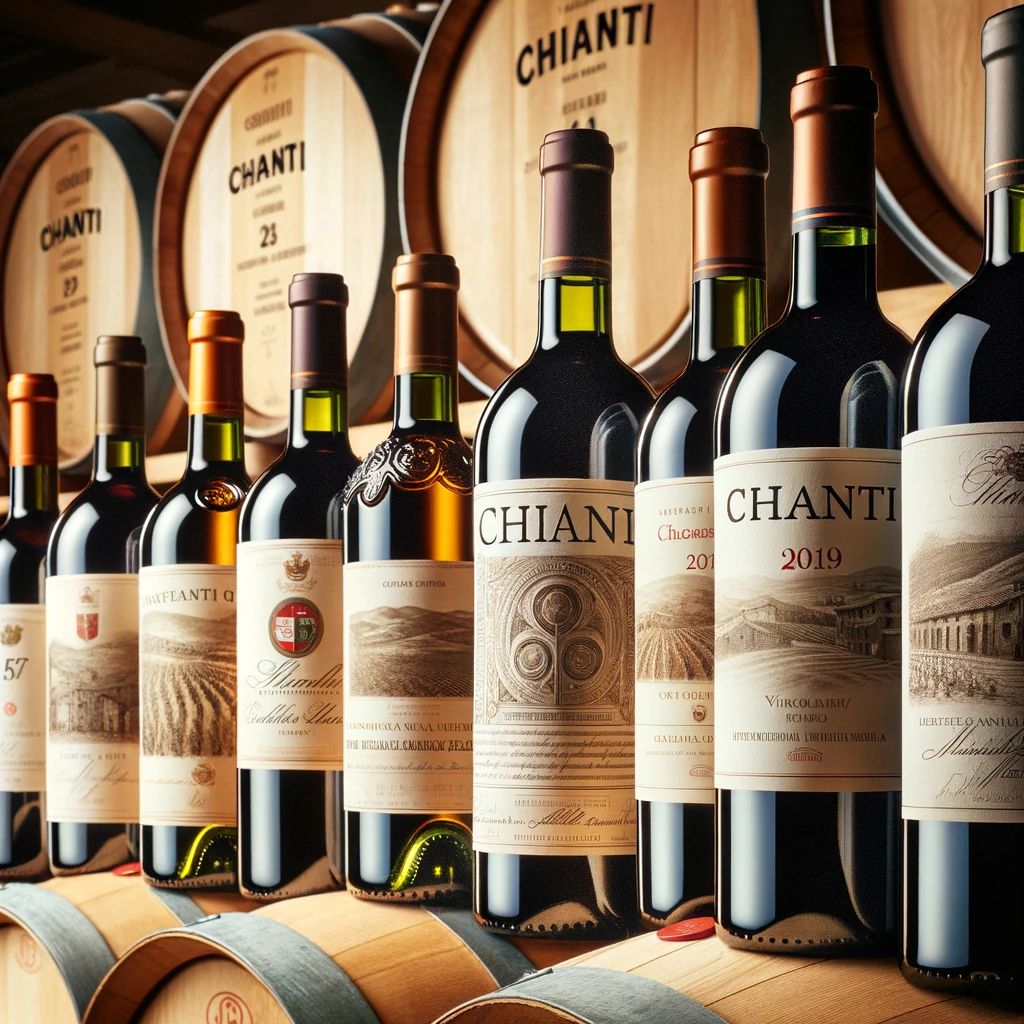
In the heart of Tuscany, surrounded by rolling hills, towering cypresses, and sunflower fields, a treasure of immeasurable value is hidden: Chianti, a DOCG red wine that embodies the essence of the Italian winemaking tradition. This article will guide you through the history, winemaking techniques, and offer advice on how to best enjoy Chianti, exploring the differences between its varieties and suggesting some must-visit wineries.
The Chianti and Its Grapes: A Sensory Journey in Tuscany
Chianti is much more than just a wine; it’s a sensory journey that begins with the meticulous selection of grapes, primarily Sangiovese, the pulsating heart of this noble red. Alongside other local varieties like Canaiolo and Colorino, and sometimes enriched by international varieties such as Merlot and Cabernet Sauvignon, they contribute to a wide array of wines that reflect the diversity of the Tuscan land. The winemaking techniques of Chianti, refined over centuries, involve fermentation in large steel tanks or wooden barrels, followed by aging that varies with the type of Chianti, giving each bottle its unique character.
The Different Types of Chianti
Chianti is categorized into various types, each with specific requirements in terms of grape composition, winemaking techniques, and aging periods. These differences profoundly affect the wine’s organoleptic characteristics, such as aroma, taste, and aging potential.
- Chianti Classico: Perhaps the most renowned Chianti type. To be labeled ‘Classico,’ the wine must come from the historic Chianti zone, located between Florence and Siena. Chianti Classico must contain at least 80% Sangiovese grapes, though it can be blended with other varieties like Canaiolo, Merlot, and Cabernet Sauvignon. It is known for its balance, structure, and aromatic complexity, with notes of cherry, plum, and spices.
- Chianti Riserva: This type requires a minimum aging period of 24 months, including at least three months of bottle refinement. This process endows Chianti Riserva with greater complexity and structure, making it ideal for long-term aging. Notes of ripe fruit blend with hints of vanilla and leather, stemming from the extended wood aging.
- Chianti Superiore: This designation applies to wines produced outside the Chianti Classico area but meet higher quality standards than standard Chianti DOCG. Chianti Superiore has a minimum aging period of nine months and features a rich aromatic profile, with good structure and smoothness.
- Chianti Gran Selezione: Recently introduced, this category represents the pinnacle of Chianti Classico quality. Produced exclusively with grapes harvested by the winery, Chianti Gran Selezione requires a minimum aging of 30 months. These wines offer unparalleled complexity and aromatic depth, with a great aging capacity.
Perfect Pairings: How to Enjoy Chianti
With its versatility, Chianti is the perfect companion for delving into Italian cuisine. Ideal with meat-based dishes like Fiorentina steak or wild boar stew, it also pairs beautifully with aged cheeses and mushroom dishes. Don’t hesitate to try pairings with pasta with ragù or a classic Margherita pizza, discovering how Chianti can elevate any dish.

Exploring Chianti Wineries
Tuscany is dotted with wineries offering unique experiences, from small family operations to large renowned companies. Visiting Chianti wineries provides an opportunity to uncover the secrets of winemaking, participate in guided tastings, and, naturally, purchase some bottles to take home. Some not-to-be-missed wineries include Castello di Ama, Antinori in Chianti Classico, and Badia a Coltibuono, each with its own story and tradition.
Conclusion
Exploring the world of Chianti DOCG means immersing yourself in a centuries-old tradition that continues to amaze and delight palates across the globe. Come and discover this territory and taste the intense flavor of Chianti. The Chianti Tuscany Wine Tour by Tuscany By Gc is the tour that will allow you to experience this firsthand.


